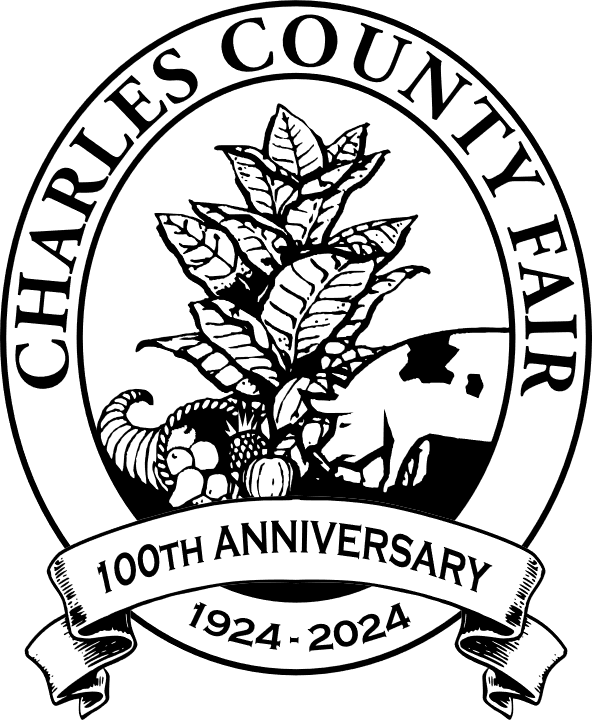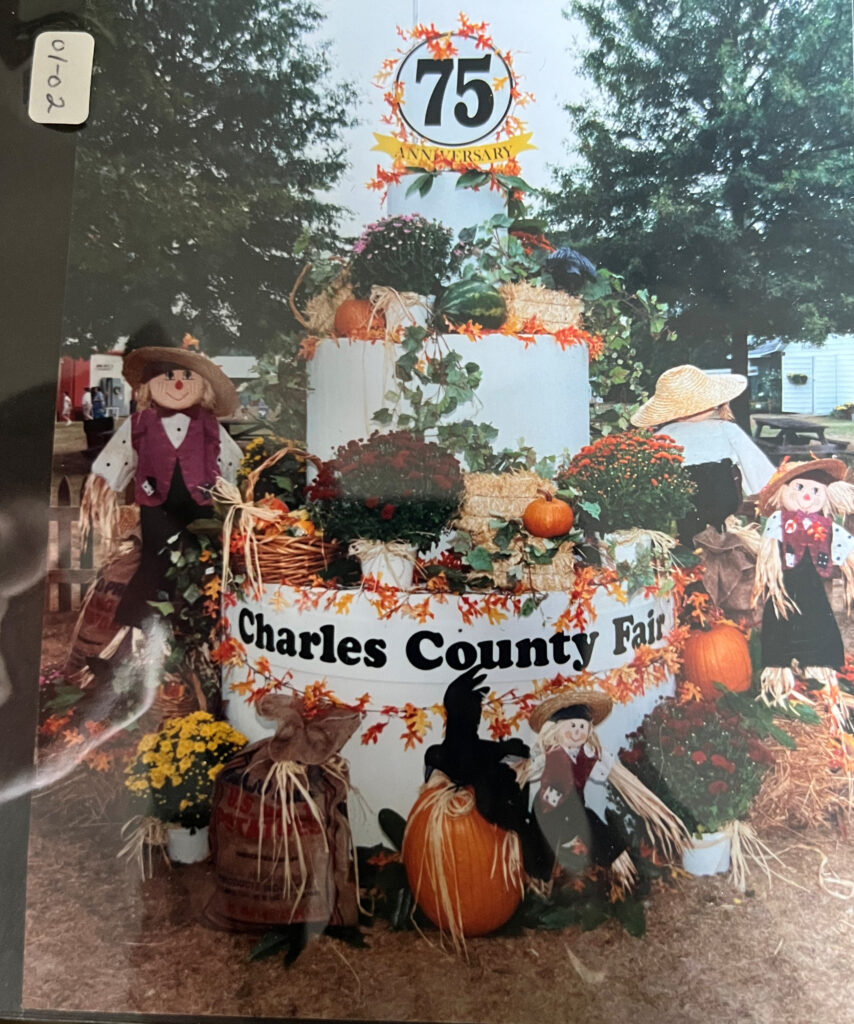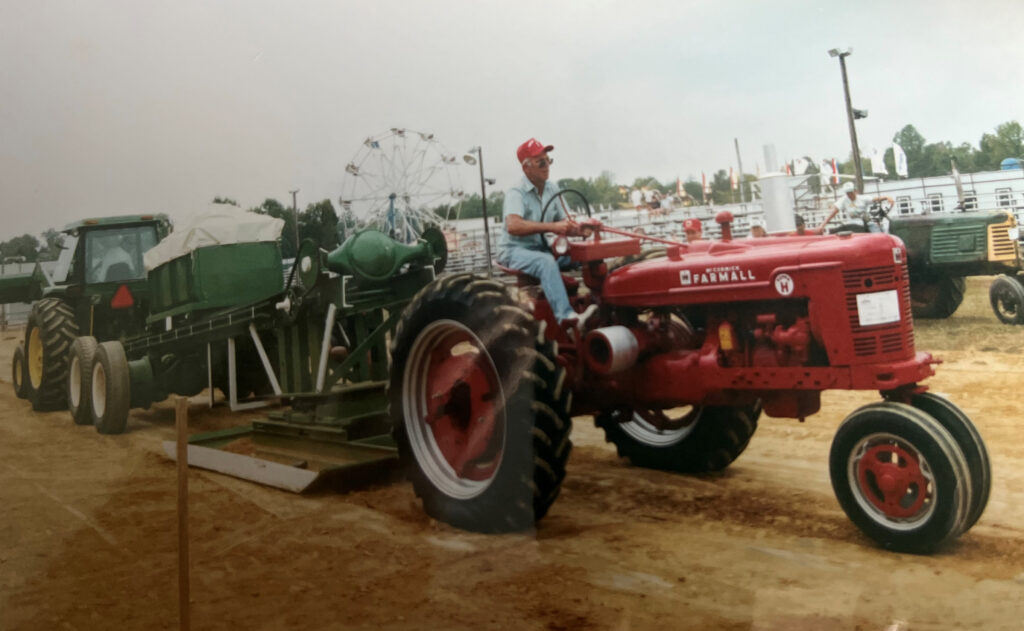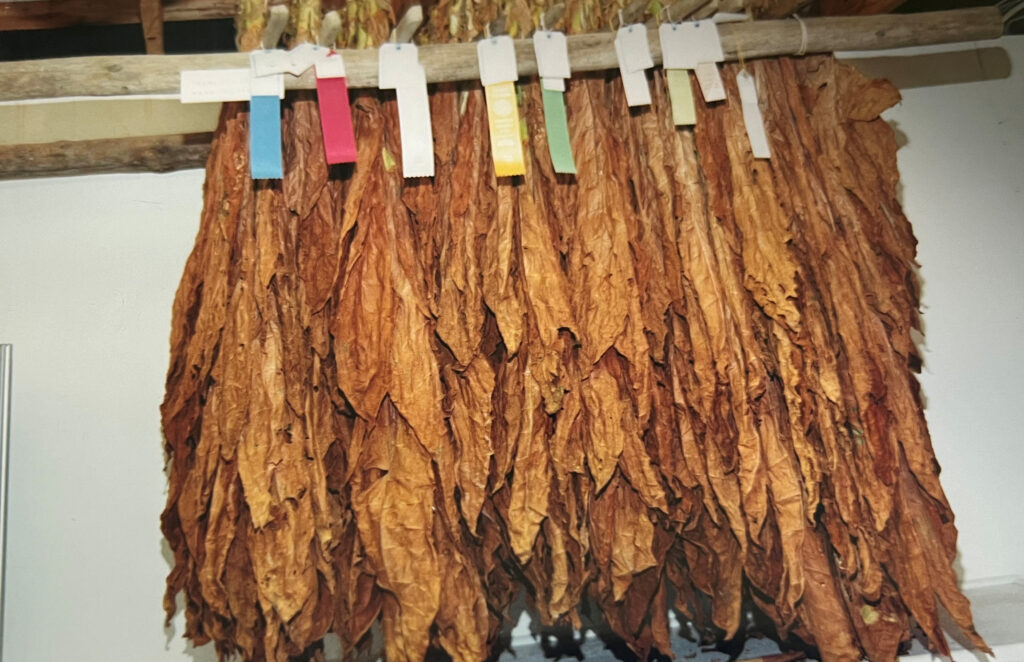
The First 100 Years
The Charles County Fair, located just south of La Plata, Maryland, is a festival that celebrates and highlights Charles County’s long, rich agricultural history. The fair was organized in the early 1920s and incorporated in 1924.
After the First World War, several interested farmers began to think in terms of a fair for Charles County which would eventually own its own grounds with buildings. The group organized a non-profit stock company, which sold shares of stock, with a par value of $10 to any interested party, making no promises to pay any dividends, but to consider the purchase a donation. The committee divided up a list of possible buyers and proceeded at once to canvas their list for purchase of shares. The committee was to report back in two weeks. The report showed sales of $1,200, which was encouraging for the group. They decided to proceed with plans for holding a fair in the fall of 1924 and continued selling stock to provide money for operation. The first fair in 1924 was held at Chapel Point, once a lovely park site on the Port Tobacco River, and another time it was held at the old La Plata town hall, which stood where the Port Tobacco Players theater now is on Charles Street.
Around 1930, the board purchased 40 acres at the present Spring Hill site, south of La Plata, for a reported $800. The only building then on the property was, appropriately, a small tobacco barn near the present main entrance. That barn was used for several years to house poultry exhibits. All other departments were housed in rented tents. Electricity was unknown in the area and the fair used a generator operated by a farm tractor. One man recalled,“It was somewhat better than nothing.”
In the eighth year of the Fair, 1931, the fair board staged a pageant entitled “Charles County History”. The next year, 1932, being the bicentennial of the birth of George Washington and with all the country entering into appropriate celebration, the fair produced a pageant entitled “Neighbor Washington”, in which a large part of the cast was from the local schools. The writer and producer was Kathleen Read Coontz of Washington, D.C. Mrs. Coontz had been recommended for the work by the National Committee of the Bi-Centennial.
In 1933, the fair board decided to pay homage to the plant which for almost 300 years had been the backbone of their economic and social life, tobacco; and to have a pageant by also paying homage to the beauty and charm of our county by having a queen to reign over the festivities. They decided to choose a lovely local girl as their fair queen, nicknamed Queen Nicotina. This was the first recognition of tobacco as a prime factor in the economy of Charles County. With the exception of one year during World War II, Queen Nicotina has been a trademark of the Charles County Fair. The first queen was selected by ballots published in the local papers and they mailed in the vote. Later, they had a dance each year for the ladies nominated and each ticket for the dance counted as a vote for one of the lovely young ladies that had been nominated. They had an applause meter, spinning of the wheel, and a picking of the rose. Queen Nicotina is now selected by a panel of judges. Each contestant is sponsored by a civic or educational organization and appears before a panel of judges. They are judged on scholastic achievement, extracurricular activities, poise, appearance and a personal interview.
During the depression years of the 1930s, the fair’s survival was somewhat in doubt, but with the increasing prosperity of Charles County, the fair continued and even prospered. An unusual pageant at the county fair was literally mounted in 1939 by 600 cavalrymen from Fort Myers, Va., who rode down here to participate. Past president Mitchell Digges recalled that it took a good deal of finagling to get the Virginia-based cavalrymen to a Maryland fair. He recalled that Senator Joseph Tydings had to use his influence, and remembers personally speaking with the captain in charge of the cavalrymen, trying to persuade him to participate. The captain’s name was George S. Patton, later to become a legendary general during World War II.
Our early period from 1924-1941 was chronicled in a 1978 Times Crescent newspaper article.
Only two years in our history have we not had a fair. In 1943, we didn’t have a fair due to World War II, and in 2020, COVID and its inherent restrictions did not allow us to have a fair.
Our little county fair has grown over the years. We currently have a farm museum, a historic one room schoolhouse, two commercial buildings, seven exhibit buildings, and several newer livestock buildings that were built after a destructive fire in April 2013. The fire was very sad time for our community, but everybody pulled together, and the fair rented tents to house our animals for the 2013 Fair. The new livestock arena and show ring was dedicated on September 11th, 2014.
Over the past years, with the exception of several years of rain, the fair has operated at a profit. By state law, the fair receives state aid in financing the premiums paid to exhibitors and the balance of our income comes from the admission fees, sale of concessions and fairground rentals. Our yearly profits are put back into the fair by purchasing new equipment and for the construction and upkeep of our buildings. Our new and upgraded buildings have allowed us to increase our use of the fairgrounds for non-fair events during the year, which also helps in supporting our fair and its mission of celebrating the county’s rich agricultural history.
The participation of other organizations (4-H, FFA, Farm Bureau, and Lions Club among others) has been one of the strengths of the fair. As our fair embarks on its second century of operation, the all-volunteer fair board knows they couldn’t put on this event without all the volunteers in the exhibit buildings and other areas on the grounds. This wonderful cooperative volunteer help and spirit is best expressed by a message from the Honorable James C. Mitchell, our 1953 Fair President. A part of his letter asking for every citizen’s help to hold a successful fair read, “The promotion of the Charles County Fair is an undertaking which requires months of preparation by many public-spirited citizens who are moved by a sense of civic pride in contributing their time and effort.” This is still true in the 21st century.
The Charles County Fair Board and its volunteers are looking forward to celebrating another 100 years!
Check out these short videos from the 100th Fair anniversary celebration!
(Links go to an external site, YouTube)
100th Charles County Fair Preview/History
100th Charles County Fair Recap



